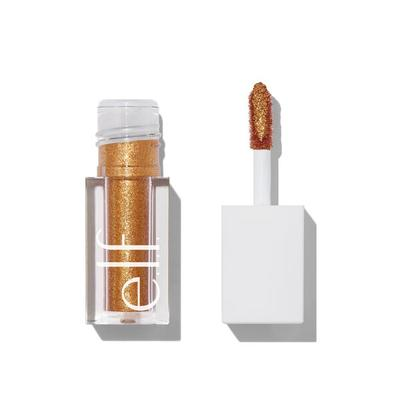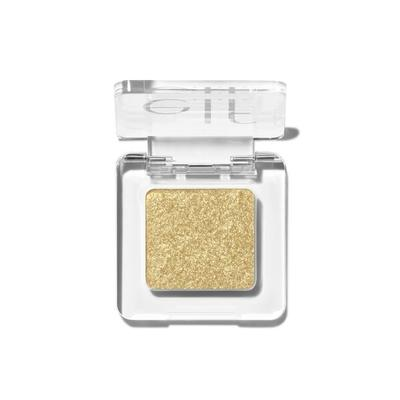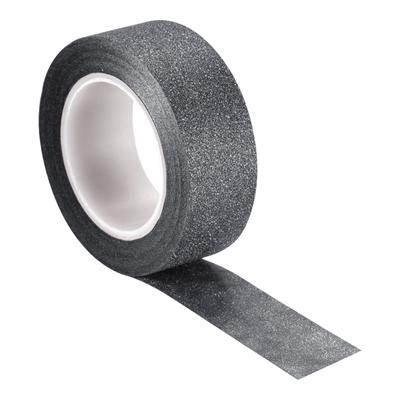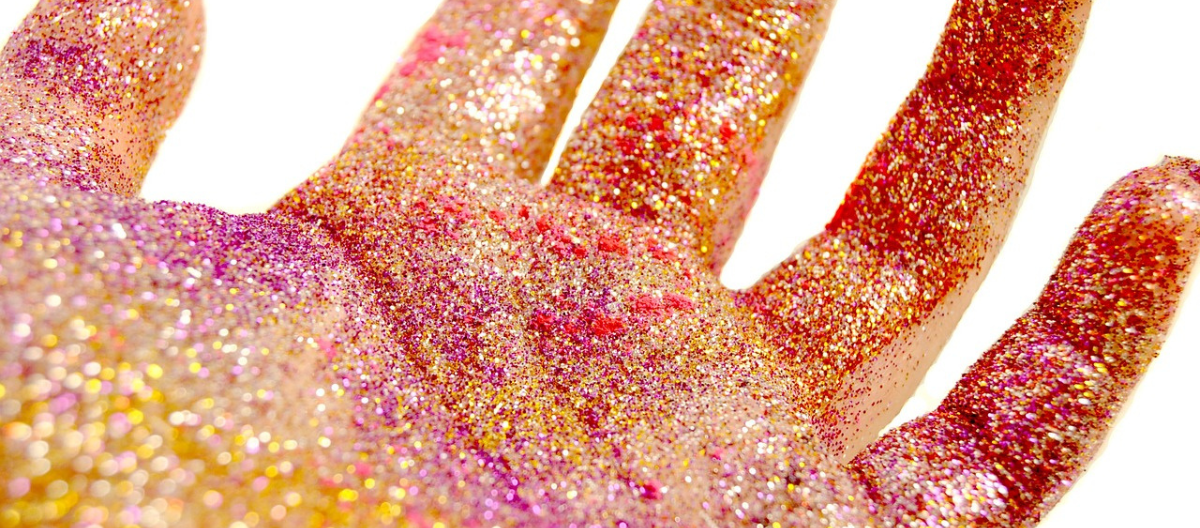Hey Diva dressing fans! When the items we love coincide with brands we work with, Diva dressing will use Paid Links in our articles. If you decide to click on these links and purchase the product, we get a small commission. Our Opinions Are Our Own, but we do add Paid Links as a way to offer these products at no added cost to our readers. Want to know more? Click Here to check out our Terms of Use anytime!
Traditional glitter may look beautiful, but it comes with an environmental cost. Made from tiny pieces of microplastic, conventional glitter contributes to plastic pollution, especially in oceans, where it can harm marine life. With rising awareness of environmental sustainability, many people are seeking eco-friendly alternatives to traditional glitter that offer the same sparkle without the harmful environmental impact.
Fortunately, several sustainable, biodegradable glitter options are available today. These alternatives are made from natural materials that break down harmlessly over time, making them a great choice for eco-conscious individuals who still want to add a little shimmer to their crafts, cosmetics, or events.
Before diving into alternatives, it’s important to understand why conventional glitter is problematic. Traditional glitter is made from plastic, typically polyethylene terephthalate (PET) or polyvinyl chloride (PVC), both of which are non-biodegradable.
Environmental Impact:
- Microplastic Pollution: Glitter falls under the category of microplastics, which are small plastic particles (less than 5mm in size) that can accumulate in waterways and oceans. Marine life can ingest these particles, leading to harmful consequences for aquatic ecosystems.
- Persistence in Nature: Plastic glitter doesn’t break down easily and can remain in the environment for hundreds of years. This adds to the growing problem of plastic pollution, impacting both wildlife and human health.
Human Health Concerns:
Toxic Chemicals: Some glitter is coated with dyes or metallic substances that can leach harmful chemicals when exposed to water or heat. These toxins can eventually enter the food chain, posing risks to humans.
Eco-Friendly Alternatives to Traditional Glitter
To combat the negative effects of microplastic glitter, several eco-friendly alternatives have been developed. These options are biodegradable, compostable, or made from sustainable materials, providing the same sparkle without the environmental damage.
Biodegradable Glitter (Plant-Based Glitter)
One of the most popular and effective eco-friendly alternatives to traditional glitter is biodegradable glitter, also known as plant-based glitter. This type of glitter is made from cellulose derived from plants, such as eucalyptus trees.
- Biodegradable: Made from plant cellulose, biodegradable glitter decomposes naturally in the environment without leaving harmful microplastics behind.
- Non-Toxic: Free from the toxic chemicals found in traditional glitter, biodegradable glitter is safe for use in cosmetics, crafts, and even edible products.
- Variety of Colors and Textures: Despite being eco-friendly, biodegradable glitter still offers the same variety of colors, shapes, and textures as traditional glitter.
Popular Brands
- BioGlitz: A leading brand in the eco-glitter movement, BioGlitz offers biodegradable, plant-based glitter that’s suitable for use in cosmetics, arts, and crafts.
- EcoStardust: Known for its wide range of colors and sizes, EcoStardust glitter is made from sustainable eucalyptus cellulose and is certified biodegradable.
- The Glitter People: This company creates biodegradable glitter using plant-based cellulose and natural pigments, offering a sustainable option for makeup artists and crafters alike.
Mica Glitter (Mineral-Based Glitter)
Mica is a naturally occurring mineral that has been used for centuries to add shimmer to products. Mica glitter offers an eco-friendly alternative to plastic glitter and is commonly found in cosmetics, such as highlighters, eyeshadows, and lip gloss.
Features:
- Natural Shimmer: Mica reflects light beautifully, giving a natural, pearlescent shine similar to glitter.
- Non-Plastic: Mica is a mineral, not a plastic, so it doesn’t contribute to microplastic pollution.
- Versatile Use: Mica can be used in cosmetics, body art, and crafts, making it a versatile alternative to synthetic glitter.
Considerations:
- Ethical Sourcing: While mica itself is eco-friendly, some mining practices—especially in developing countries, have raised concerns about unethical labor and environmental practices. Look for brands that source mica ethically and transparently.
Popular Brands:
- Rituel de Fille: This cosmetic brand uses ethically sourced mica in its glittery products, creating stunning makeup with a focus on natural ingredients.
- Lush Cosmetics: Known for its ethical and sustainable practices, Lush uses natural mica in many of its beauty products, ensuring the mica is sourced responsibly.
Salt-Based Glitter
Another surprising eco-friendly glitter alternative is made from salt. Salt-based glitter is non-toxic, biodegradable, and safe for the environment. It’s an excellent choice for temporary decorations or art projects that don’t require long-lasting sparkle.
Features:
- Biodegradable: Since it’s made from natural salt crystals, salt glitter is fully biodegradable and doesn’t contribute to plastic pollution.
- Safe for Kids: Salt glitter is non-toxic and safe for children’s arts and crafts projects.
- Affordable: This is a low-cost alternative to traditional glitter and can often be made at home.
Make Salt Glitter at Home:
- Materials: Table salt, food coloring.
- Instructions: Simply mix salt with a few drops of food coloring, spread it out on a baking sheet, and let it dry. The result is a sparkling, eco-friendly glitter that can be used in crafts.
Sugar Glitter (Edible Glitter)
For baking and food-related decorations, sugar glitter or edible glitter is the perfect eco-friendly alternative. Sugar glitter is made from edible ingredients like sugar or cornstarch, making it safe to use on food and fully biodegradable.
Features:
- Edible and Non-Toxic: Sugar glitter is completely safe to eat, making it ideal for decorating cakes, cupcakes, and other desserts.
- Biodegradable: Made from natural ingredients like sugar, cornstarch, and natural colorings, sugar glitter decomposes naturally without harming the environment.
- Vegan and Cruelty-Free: Most edible glitters are made from plant-based ingredients, making them suitable for vegan and cruelty-free lifestyles.
Popular Brands:
Bakell: A leading brand in edible glitter, Bakell offers a range of FDA-approved, edible glitters made from sugar and other natural ingredients.
Wilton: Known for its baking products, Wilton’s edible glitter is perfect for adding shimmer to cakes, cookies, and other treats.
Cornstarch-Based Glitter
Cornstarch glitter is another biodegradable alternative made from natural ingredients. This glitter is derived from renewable sources and is often used for eco-friendly crafts and art projects.
Features:
- Compostable and Biodegradable: Cornstarch-based glitter breaks down naturally over time, making it a sustainable option.
- Non-Toxic: Safe for both the environment and personal use, cornstarch glitter is free from harmful chemicals.
- Great for Crafts: Cornstarch glitter is perfect for DIY projects, card-making, and holiday decorations.
Popular Brands:
NatureGlitz: This company produces cornstarch-based glitter made from renewable plant materials, offering eco-friendly sparkle for both crafting and personal use.
Here are some glitter products you can try
e.l.f. Cosmetics Liquid Glitter Eyeshadow $5.10

e.l.f. Cosmetics Fine as Fleck Glitter Eyeshadow $5.10

Glitter Tape Decorative Craft Tape Self Adhesive Stick $5.99



